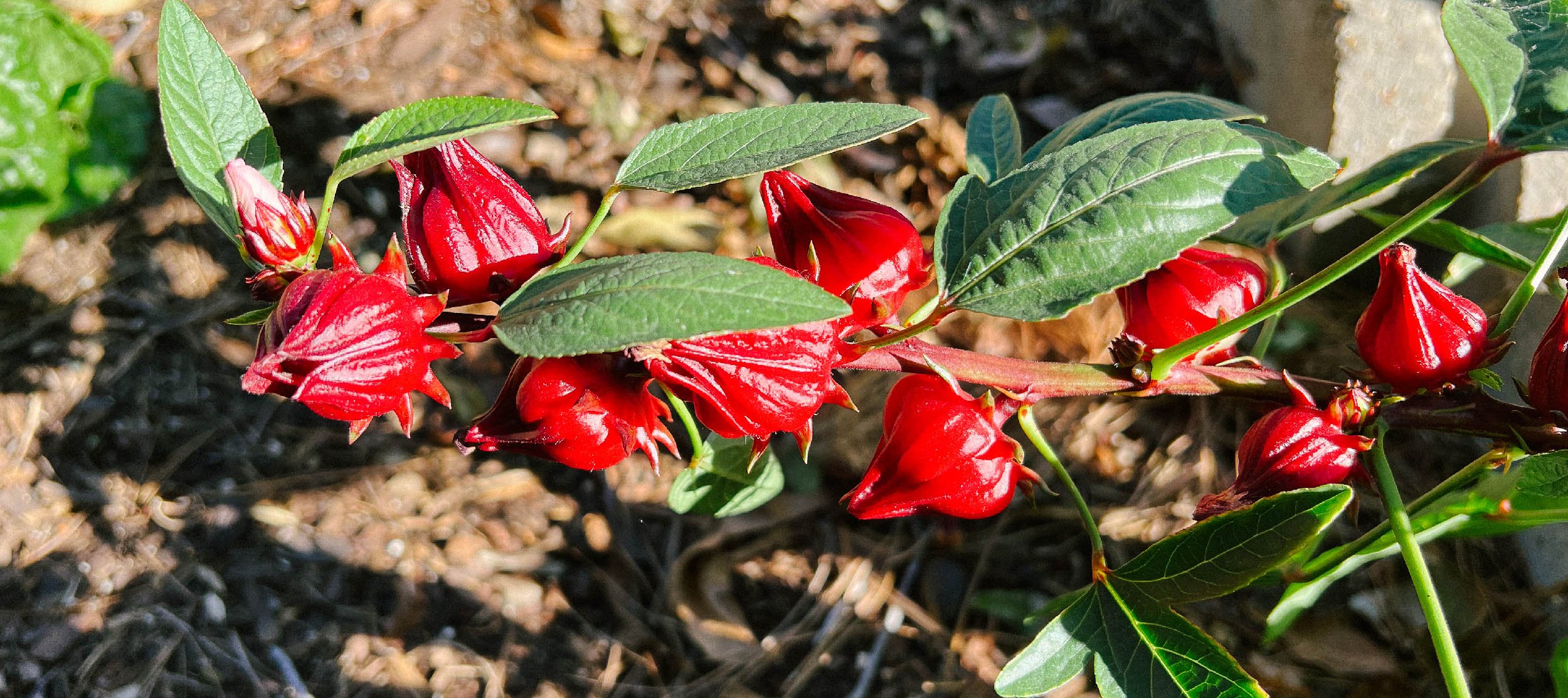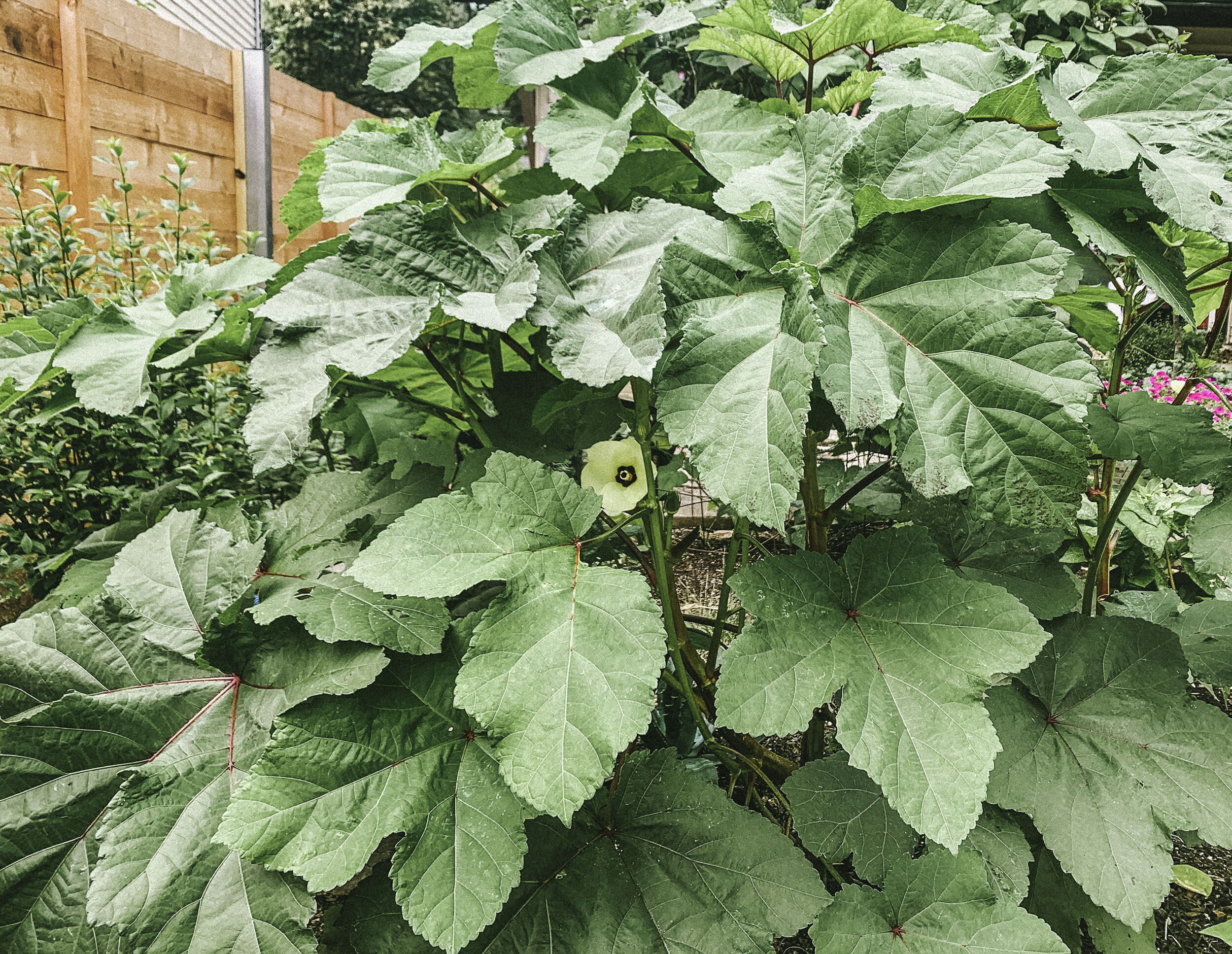Tea Hibiscus (Asian Sour Leaf Roselle Seeds)
Grow cup after cup of your very own hibiscus tea, brimming with a swirling, ruby-red essence that is not only a feast for the eyes but a celebration of flavor, juicy and slightly tart.
It’s usually grown in tropical and subtropical regions and I’ve found it incredibly easy to grow in Austin. Plant in April and in early fall you’ll begin pulling plump red calyxes off of gorgeous blooming plants. These vibrant red jewels are then delicately dried, preserving their deep, mesmerizing hue and unlocking their full, juicy flavor until it is released by hot water swirling in a teacup.
JOY MAX QUALITIES:
Packed with vitamins and minerals, particularly high in Vitamin C, making it excellent for boosting the immune system.
Known for its antioxidant compounds, it aids in combating free radicals in the body.
Large seeds sprout early and grow vigorously, making it fun for kids to grow too.
The leaves, calyces, and flowers are all edible and pretty
Large and attractive in the garden, plant where it will receive some shade in the summer months.
Open-Pollinated
Grow cup after cup of your very own hibiscus tea, brimming with a swirling, ruby-red essence that is not only a feast for the eyes but a celebration of flavor, juicy and slightly tart.
It’s usually grown in tropical and subtropical regions and I’ve found it incredibly easy to grow in Austin. Plant in April and in early fall you’ll begin pulling plump red calyxes off of gorgeous blooming plants. These vibrant red jewels are then delicately dried, preserving their deep, mesmerizing hue and unlocking their full, juicy flavor until it is released by hot water swirling in a teacup.
JOY MAX QUALITIES:
Packed with vitamins and minerals, particularly high in Vitamin C, making it excellent for boosting the immune system.
Known for its antioxidant compounds, it aids in combating free radicals in the body.
Large seeds sprout early and grow vigorously, making it fun for kids to grow too.
The leaves, calyces, and flowers are all edible and pretty
Large and attractive in the garden, plant where it will receive some shade in the summer months.
Open-Pollinated
Grow cup after cup of your very own hibiscus tea, brimming with a swirling, ruby-red essence that is not only a feast for the eyes but a celebration of flavor, juicy and slightly tart.
It’s usually grown in tropical and subtropical regions and I’ve found it incredibly easy to grow in Austin. Plant in April and in early fall you’ll begin pulling plump red calyxes off of gorgeous blooming plants. These vibrant red jewels are then delicately dried, preserving their deep, mesmerizing hue and unlocking their full, juicy flavor until it is released by hot water swirling in a teacup.
JOY MAX QUALITIES:
Packed with vitamins and minerals, particularly high in Vitamin C, making it excellent for boosting the immune system.
Known for its antioxidant compounds, it aids in combating free radicals in the body.
Large seeds sprout early and grow vigorously, making it fun for kids to grow too.
The leaves, calyces, and flowers are all edible and pretty
Large and attractive in the garden, plant where it will receive some shade in the summer months.
Open-Pollinated
Hibiscus sabdariffa GROW ZONES: 4-12 PLANT HEIGHT: Up to 6’ PLANT WIDTH: 36” SEED SPACING: 3” SEED DEPTH: Surface sow IDEAL TEMP: 70º-80º Germination: 7-14 days DAYS TO MATURITY: 70-90 (the colder your zone is the longer it takes) SOIL: well-composted with good drainage LIGHT: Full sun in spring. In Texas, plant it where it can receive some shade from the hottest summer sun as leaves will scorch. Open-Pollinated.
Planting Information:
In non-tropical grow zones, tea hibiscus is an annual, planted in the spring (April in central Texas) and harvested in October or November at which point you can retire the plant. In warmer zones, it grows as a perennial with harvests each year. You only need to grow one or two plants for a healthy harvest. If you really love it, or you’d like to gift the beautiful tea to friends, plant more. The plants do grow large so make sure to plan ahead.
If you live in central Texas, it is easiest to sow these directly in the garden once temps begin to warm in spring. I usually plant them in April. If you live in a colder zone, you should start them indoors to get a head start as tea hibiscus is extremely sensitive to frost and will not thrive if exposed to temperatures lower than 40º. Seeds germinate in about a week and once established require little attention until summertime, at which point you should keep them well-watered. Plant more than you need and then thin out the weakest seedlings and to get the spacing you most like.


















